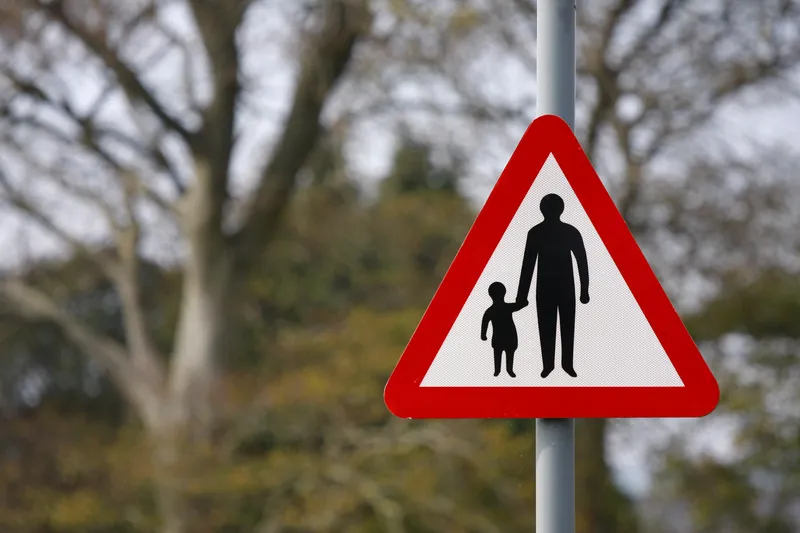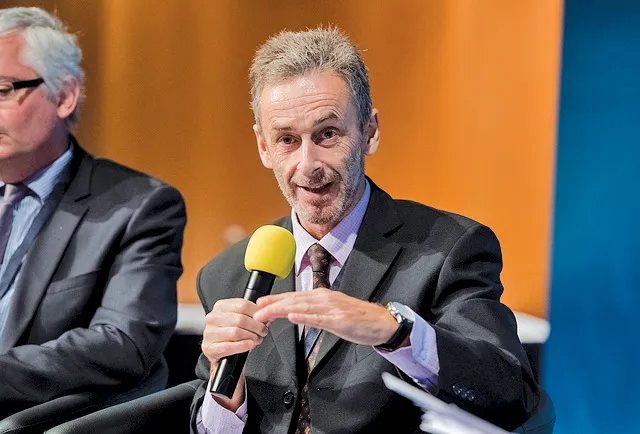IRF Geneva’s Susanna Zammataro highlights the importance of the Federation’s ongoing commitment to the work of the United Nations Road Safety Collaboration, with which she serves as co-chair of the project group dedicated to Safer Roads and Mobility
On 10th April, the United Nations General Assembly was due to discuss a new global road safety resolution. For those who might dismiss this as just another piece of paper condemned to sit on government shelves and gather dust, this a reminder of a few facts
May 15, 2014
Read time: 7 mins

IRF Geneva’s Susanna Zammataro highlights the importance of the Federation’s ongoing commitment to the work of the United Nations Road Safety Collaboration, with which she serves as co-chair of the project group dedicated to Safer Roads and Mobility
On 10th April, the3262 United Nations General Assembly was due to discuss a new global road safety resolution. For those who might dismiss this as just another piece of paper condemned to sit on government shelves and gather dust, this a reminder of a few facts and figures: An estimated 1.24 million lives were lost in 2010 as a result of road traffic crashes. Some 80% of these occurred in middle-income countries, where 72% of the world’s population lives, but where only half of the world’s registered vehicles are owned and driven. The African region has the highest road traffic fatality rate while Europe has the lowest. Worldwide, half of all road traffic deaths involve vulnerable road users, a category which essentially comprises pedestrians, cyclists and motorcyclists. If present trends are allowed to continue, road fatalities will by 2030 account for a greater global death toll than HIV/AIDS; or both malaria and tuberculosis combined. While some countries have adopted legislation to address key risk factors such as speeding and drink driving, and promote protective measures like motorcycle helmets, seat belts and child restraints, comprehensive road safety laws currently cover only about 7% of the world’s population. Effective enforcement remains a major challenge.
In April 2012, through its resolution A/66/260, the UN General Assembly highlighted the growing public health and development burden resulting from road traffic crashes, and drew urgent attention to the negative social and economic impacts road casualties were having on both the sustainable development of individual countries and global efforts to achieve the Millennium Development Goals. Co-sponsored by some 80 countries, the resolution addressed adoption of legislation, advocacy, financing and monitoring, and called upon the Secretary-General to report again to the General Assembly in 2014, at its 68th session, on progress made in improving global road safety.
In accordance with this timeline, Secretary-General Ban Ki-Moon has recently issued his advance report entitled Improving global road safety, which highlights the main global and national achievements towards improving the safety of roads and vehicles that have taken place over the last two years. These notably include the launch in 2013 of a comprehensive Global Status Report on Road Safety.
3439 Decade of Action for Road Safety (2011-2020), the Global Status Report compiles key information on road safety from 182 countries, which together account for almost 99% of the world’s population. It underscores that the total number of road traffic deaths worldwide remains unacceptably high. Only 28 countries, covering some 7% of the world’s population, have comprehensive road safety laws in place covering all five key risk factors: drinking and driving, speeding and failure to use motorcycle helmets, seat-belts and child restraints. The report stresses that the pace of legislative reforms to address these key issues needs to accelerate rapidly if the number of deaths from road traffic crashes is to be substantially reduced. The report highlights that most countries – even some of the best performing in terms of the safety of their roads – concede that enforcement is often inadequate. In this context, the report is the second in a series analysing to what extent nations are effectively implementing critical road safety measures – and notably recognises those countries that have formally adopted national strategies for the Decade of Action setting measurable targets to reduce the number of people killed on their roads. In addition to the five key risk factors noted above, the report emphasises the vital importance of a range of other interdependent issues such as vehicle safety standards, road infrastructure inspections, policies on walking and cycling, and aspects of pre-hospital care systems.
1201 IRF Geneva is able to make a potentially invaluable contribution through the World Road Statistics (WRS), which it has published every year since 1964. The WRS compile authoritative strategic data for the international road, traffic and inland transport sectors drawn from primary sources worldwide. As such, they represent an important complement to the Global Status Report on Road Safety.
Another area of synergy and constructive cooperation highlighted by the Secretary General in his report is the work of IRF Geneva’s Group of Experts on Road Safety. This is championed by leading international companies drawn from2462 IRF’s global network and is helping to fill a perceived ‘infrastructure gap’ in current global road safety strategies – a missing link further echoed during the Rio+20 sustainable development discussions.
3262 United Nations Road Safety Collaboration (UNRSC) Pillar 2 Project Group, which focuses on Safer Roads and Mobility and which is chaired by IRF.
Coordinated by the World Health Organization (WHO), working in close cooperation with the UN regional commissions, UNRSC helps coordinate the road safety activities implemented by its 77 partner organisations. The Collaboration is an informal consultative mechanism, which has seen increasing participation from Governments and civil society over the past years. To ensure optimum support for the Decade of Action, the UNRSC project groups have been aligned with the five pillars of the Global plan for the Decade: road safety management, safer roads and mobility, safer vehicles, safer road users, and post-crash response.
Aimed at assisting public authorities and professionals with hands-on knowledge, the work coordinated by IRF under the Project Group Safer Roads & Mobility is articulated around four focus areas, each co-ordinated by a distinct sub-group. The first covers the “successful integration of road safety into existing systems and policies” and addresses the crucial need to find ways of ensuring deep and effective integration of road safety into wider infrastructure investment systems.
The second explores effective “road safety infrastructure management tools”. While a variety of infrastructure safety management tools have been developed to help evaluate, prioritise and monitor road infrastructure safety performance, there is currently a widely perceived lack of guidelines available to describe how and when each tool should be used in order to support a robust road safety infrastructure management system. In a similar vein, the third sub-group is developing a set of “‘How to’ tips for road safety cost-effective solutions” to help engineers and urban planners, who are under increasing pressure to design roads at the lowest possible cost, ensure and disseminate basic road and traffic safety measures and best practice. The sub-group will, therefore, aim to draw on its international experience and expertise to put together a series of rapid reference resources coupled with a convenient selection of effective solutions that have the practical merit of being proven, readily available and easily adaptable.
Finally, the fourth sub-group is dedicated to drawing up a “model framework for road safety engineering capacity building”, which will aim to provide a practical framework for improving and significantly scaling up road safety engineering capacity in low and middle-income countries.
In the context of discussions on the post-2015 development agenda, the economic and social repercussions flowing from the current appalling lack of safety on the world’s roads have, once again, been specifically recognised as a major obstacle to sustainable development. In contrast, the development of safer roads has an acknowledged capacity to bring growth to developing countries by, for example, linking isolated communities to schools, hospitals, jobs and markets. A road safety allocation of just 1-3% in a construction budget can often be enough to significantly save lives and reduce injuries. And safer roads offer much higher returns from every perspective.
• For more information, or to get involved in any of the road safety initiatives introduced in this article, contact the author via [email protected]. Pictures: courtesy UNRSC
On 10th April, the
In April 2012, through its resolution A/66/260, the UN General Assembly highlighted the growing public health and development burden resulting from road traffic crashes, and drew urgent attention to the negative social and economic impacts road casualties were having on both the sustainable development of individual countries and global efforts to achieve the Millennium Development Goals. Co-sponsored by some 80 countries, the resolution addressed adoption of legislation, advocacy, financing and monitoring, and called upon the Secretary-General to report again to the General Assembly in 2014, at its 68th session, on progress made in improving global road safety.
In accordance with this timeline, Secretary-General Ban Ki-Moon has recently issued his advance report entitled Improving global road safety, which highlights the main global and national achievements towards improving the safety of roads and vehicles that have taken place over the last two years. These notably include the launch in 2013 of a comprehensive Global Status Report on Road Safety.
Global status
Serving as a baseline for the UNIRF commitment
The availability of reliable data to inform effective strategies is increasingly recognised as a critical factor by the global road safety community. In this respect,Another area of synergy and constructive cooperation highlighted by the Secretary General in his report is the work of IRF Geneva’s Group of Experts on Road Safety. This is championed by leading international companies drawn from
United Nations Road Safety Collaboration
Addressing road safety in an integrated manner through five thematic sub-groups, the Group of Experts directly complements the work of theCoordinated by the World Health Organization (WHO), working in close cooperation with the UN regional commissions, UNRSC helps coordinate the road safety activities implemented by its 77 partner organisations. The Collaboration is an informal consultative mechanism, which has seen increasing participation from Governments and civil society over the past years. To ensure optimum support for the Decade of Action, the UNRSC project groups have been aligned with the five pillars of the Global plan for the Decade: road safety management, safer roads and mobility, safer vehicles, safer road users, and post-crash response.
Aimed at assisting public authorities and professionals with hands-on knowledge, the work coordinated by IRF under the Project Group Safer Roads & Mobility is articulated around four focus areas, each co-ordinated by a distinct sub-group. The first covers the “successful integration of road safety into existing systems and policies” and addresses the crucial need to find ways of ensuring deep and effective integration of road safety into wider infrastructure investment systems.
The second explores effective “road safety infrastructure management tools”. While a variety of infrastructure safety management tools have been developed to help evaluate, prioritise and monitor road infrastructure safety performance, there is currently a widely perceived lack of guidelines available to describe how and when each tool should be used in order to support a robust road safety infrastructure management system. In a similar vein, the third sub-group is developing a set of “‘How to’ tips for road safety cost-effective solutions” to help engineers and urban planners, who are under increasing pressure to design roads at the lowest possible cost, ensure and disseminate basic road and traffic safety measures and best practice. The sub-group will, therefore, aim to draw on its international experience and expertise to put together a series of rapid reference resources coupled with a convenient selection of effective solutions that have the practical merit of being proven, readily available and easily adaptable.
Finally, the fourth sub-group is dedicated to drawing up a “model framework for road safety engineering capacity building”, which will aim to provide a practical framework for improving and significantly scaling up road safety engineering capacity in low and middle-income countries.
In the context of discussions on the post-2015 development agenda, the economic and social repercussions flowing from the current appalling lack of safety on the world’s roads have, once again, been specifically recognised as a major obstacle to sustainable development. In contrast, the development of safer roads has an acknowledged capacity to bring growth to developing countries by, for example, linking isolated communities to schools, hospitals, jobs and markets. A road safety allocation of just 1-3% in a construction budget can often be enough to significantly save lives and reduce injuries. And safer roads offer much higher returns from every perspective.
• For more information, or to get involved in any of the road safety initiatives introduced in this article, contact the author via [email protected]. Pictures: courtesy UNRSC








